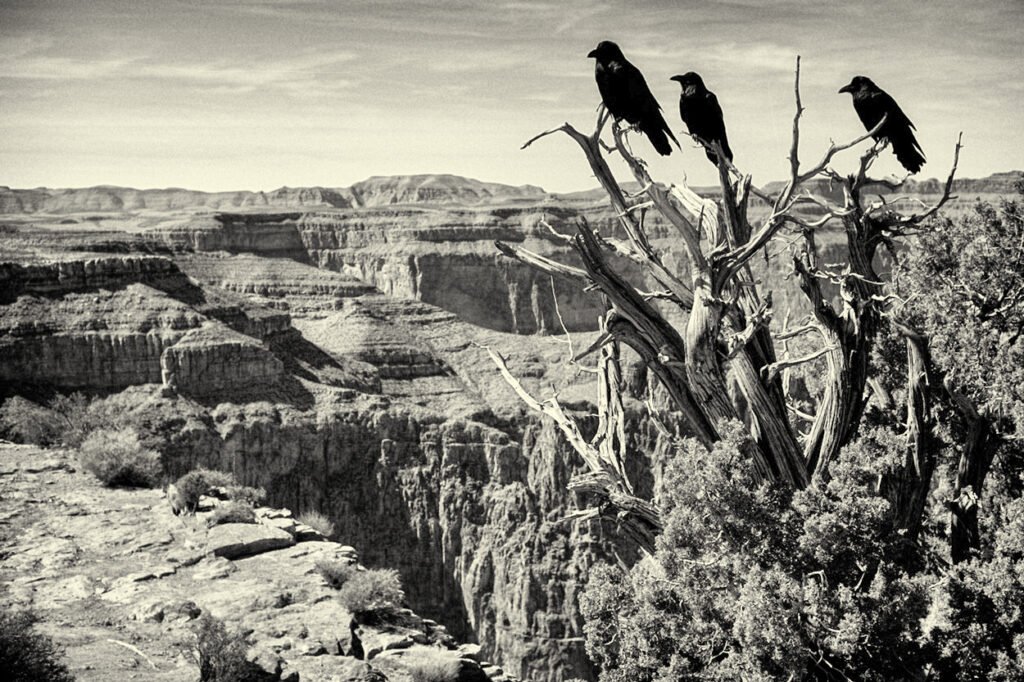
High above the crimson layers of the Grand Canyon, as dawn’s first light kissed the edges of ancient stone, three crows perched silently on the twisted branches of a wind-battered juniper.
They sat like sentinels—still, black shapes against the golden-pink horizon. The canyon stretched below them, endless and hushed, a cathedral carved by time itself.
The first crow, older than the others, bore a ragged wing. He had flown the rim for decades, watching hikers come and go, their faces turned upward in awe, never noticing him. He had seen storms roar through the gorges, lightning split the sky, and even once, a bobcat pacing silently along the South Rim trail. He was memory, the one who remembered what the canyon was before it became a postcard.
The second crow, younger and restless, shifted on the branch. He tilted his head at the river below, the Colorado snaking like a silver ribbon, far, far beneath. He was fascinated by the patterns of people—their bright clothes, their phones, their snacks left behind. To him, the Grand Canyon was a performance, and humans were the actors. He was curiosity, the one who asked what came next.
The third crow was quietest of all. Smaller, with glossy feathers that shimmered blue in the morning light, she watched the sky, not the canyon. A lone hawk circled far off, barely a speck. She dreamed of flight without destination, without purpose. She was hope, the one who imagined beyond the edge.
People paid them no heed–they were just crows, after all.
But the canyon noticed–the canyon knew.